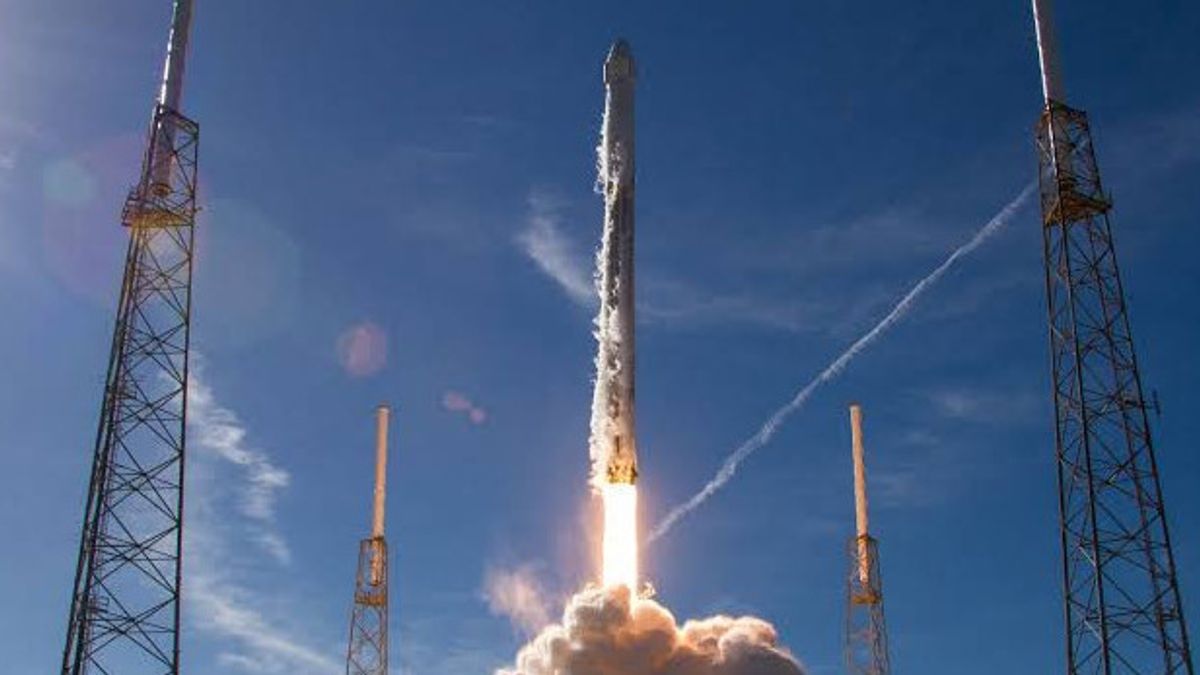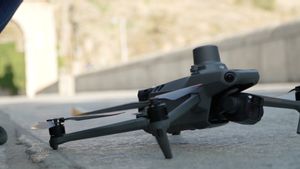JAKARTA - Astronomers surprisingly predict that the SpaceX rocket booster that was launched seven years ago is now reportedly heading to the Moon, aka will experience a collision incident in March.
The thrusters were part of a second stage Falcon 9 that lifted off from Cape Canaveral in Florida, United States (US) in February 2015 as part of a mission to send a space weather satellite more than a million miles from Earth.
The mission is dubbed the Deep Space Climate Observatory (DSCOVR), a joint effort of the US National Oceanic and Atmospheric Administration and NASA.
DSCOVR studies planet Earth and the space weather environment from Earth-Sun Lagrange Point 1 (L1), a gravitationally stable place about 930,000 miles from Earth to the Sun.
But according to meteorologist Eric Berger, after a long burn to release a satellite at a certain position in space, this thruster doesn't have enough fuel to return to Earth's atmosphere.
Its orbit is not high enough to escape the gravitational pull between the Earth and the Moon, leaving the thrusters and circling for seven years in a chaotic orbit.
Project Pluto creator Bill Gray wrote in a blog post that he calculated the likely impact on the far side of the Moon on March 4 at around 07:25 EST (1225 GMT), around 4.93. degrees north latitude and 233.20 degrees east longitude.
SpaceX typically dumps the upper-stage Falcon 9 after launch by sending it back into Earth's atmosphere. The company famously landed and reused the first stages of its Falcon 9 and Falcon Heavy rockets. However, the company had not yet made a second stage landing at the time of DSCOVR's launch.
"On estimates, the prediction above will probably be wrong by a degree or two minutes from the predicted time," said Gray.
He cites the difficulty of modeling exactly how the pressure of sunlight moves such a falling cylindrical object.
"We'll need (and I'm sure we'll get) more observations in early February to fine-tune the predictions. That will greatly reduce uncertainty," Gray said.
Since it will occur on the far side of the moon, the impact will not be visible from Earth. But pinpointing its timing and location is still important, as it could potentially allow Moon-orbiting spacecraft such as NASA's Lunar Reconnaissance Orbiter (LRO) and India's Chandrayaan 2 to study the resulting crater, and if we're lucky, possibly be able to figure out its impact.
Gray's Calculations Have Also Been Confirmed by Other Astronomers
"The second stage of the old Falcon 9 remaining in high orbit in 2015 will hit the Moon on March 4. This is interesting, but not a big deal," said astronomer and satellite tracker Jonathan McDowell, via Twitter.
For your information, the second stage of the Falcon 9 was not the only one of the rocket bodies to hit the moon. Previously, NASA directed the top stages of several Saturn V rockets to the Moon during the Apollo program.
In 2009, NASA also intentionally crashed the top of the Atlas V rocket that launched the LRO into a crater at the Moon's south pole. The resulting impact, of course, only exploded a large amount of ice, indicating that the Moon's polar regions are abundant in ice.
The English, Chinese, Japanese, Arabic, and French versions are automatically generated by the AI. So there may still be inaccuracies in translating, please always see Indonesian as our main language. (system supported by DigitalSiber.id)













